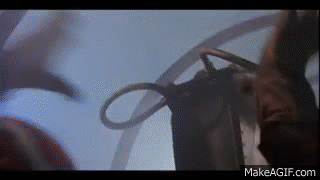So, I ran this by the Army guys that fly the Cobra in my AAHF chapter. I got some very good comments (at least I thought so as a non helo guy). The best came from the retired CW5 NTPS trained Army and Boeing Helicopters test pilot who is familiar and performed it. WRT training and overall knowledge of this technique, one of our crew chiefs is a former Army mech who is working as a helicopter A&P and building helo time while he puts together a WO pilot app to go back in. He learned this technique from in a small flight school flying Schweiser 296's and demoed it in the 296 to one of our very high time Army pilots who hadn't seen it. So it is out there. Retired Boeing test pilot comments excerpted below.
There are a couple of errors in the article but none that would impact the effectiveness of the technique, however, I do not agree that one would be measurably better then the other. The reason is simple, the amount of side wards thrust imparted by the tail rotor during the maneuver is minimal in light helicopters and is the only difference between flying out of the condition forwards or sideways. That, plus the fact that the attitude of the aircraft is not taken into account when the onset begins would skew the data. Assuming that the aircraft is fairly level at onset there should be very little difference. If however the nose is 20 degrees nose high then the lateral move would be quicker then lowering the nose and flying out of it with forward airspeed.
Regarding the applicability of the technique to tandem rotor aircraft.
It is common in a Tandem to have one rotor enter Vortex Ring State before the other. That is exactly what happened in the fatal Marana accident several years ago. Roll or pitch control in a Tandem is achieved through dissimilar thrust application of the rotors. In a Chinook forward pitch is achieved through increasing thrust in the rear rotor and decreasing it in the front. In the Osprey roll is done the same way. Right roll would be achieved by increasing thrust in the left rotor and decreasing thrust in the right. In the Marana accident the right rotor got into Vortex Ring State so the aircraft began a right roll. The pilot used the technique described in the article and applied additional power and left cyclic to stop the roll. Which increased the thrust on the right rotor and decreased it on the left. This put the aircraft deeper into Vortex Ring State, without any of the desired lateral translation. The aircraft went deeper into Vortex Ring State, rolled inverted and impacted.
I have always found this fascinating. As a non helo rated "copilot" in law enforcement I tried to make myself familiar with all the unique ways a helicopter can kill you so I could actually BE a copilot and recognize impending stupidity or carelessness. The flight profiles in LE flying could lend themselves to vortex ring state, so I have tried to educate myself on the issue. I am smarter now then I was several hours ago.


